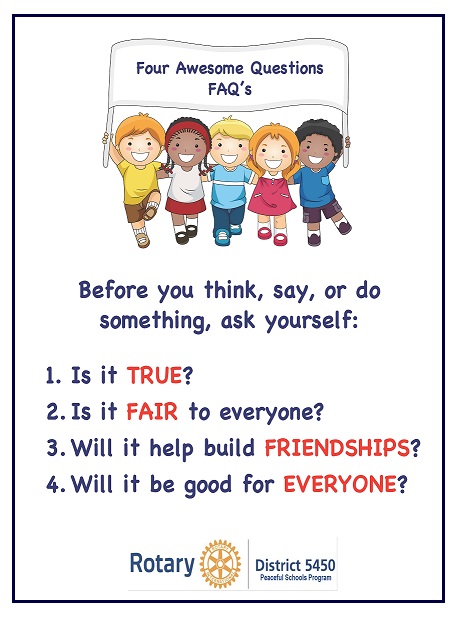Building Classroom Community Through Rituals: Reflections on the Pledge and Rotary's Four-Way Test

Rituals are important. They are collective habits that foster a sense of community.
From kindergarten to 12th grade, my childhood school day always commenced with the recitation of the Pledge of Allegiance. At that time, I didn’t give it much thought and may have even dozed off had I not been required to stand. Not until I had my own children and went to their school did I reflect on its meaning. Why wasn’t it a part of their school? I felt a loss for them. The Pledge symbolizes the recognition that there is something greater than ourselves—a reminder that we are part of a broader community and bear responsibilities towards it. (Of note, one principal did reinstate the Pledge for my children’s school one day a week for a few years.)
While preparing for my teaching interview, I contemplated how I could inspire my students to embrace a sense of purpose beyond themselves. According to the teacher interview guides, I needed to be ready to discuss classroom management and the rules I would implement.
Here’s where another story enters the picture: my involvement in Rotary. I joined Rotary because of its Four-Way Test, a set of ethical guidelines. While some Rotary clubs recite the Pledge, mine stands and recites the Four-Way Test at the start of every meeting. This prompted me to wonder if Rotary’s Four-way test could serve multiple purposes in my classroom — a ritual encompassing several elements. It could become a call to a larger community, promoting inclusion, character, and ethical behaviors. Implicit classroom rules?
So I asked a high school student – my son. He attends my Rotary club’s meetings and recently participated in the Rotary speech contest. He understoods the Four-Way Test and he’s in a lot of classrooms. Rarely do I expect complete agreement from my children, but this time, he didn’t need much time to ponder.
We’ll see how the interview goes. More importantly, we’ll see how students respond.

